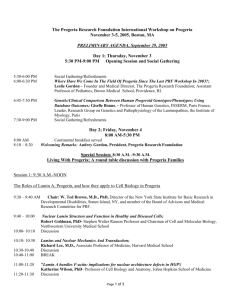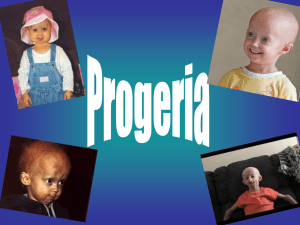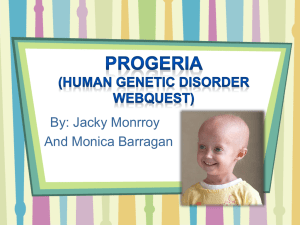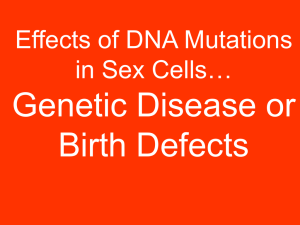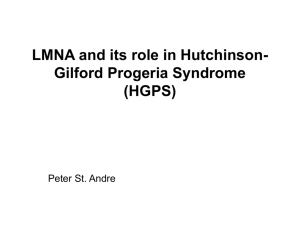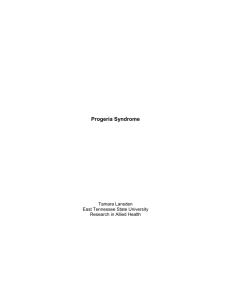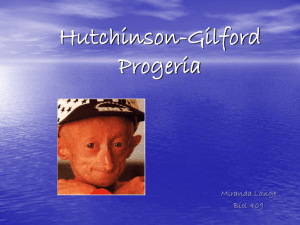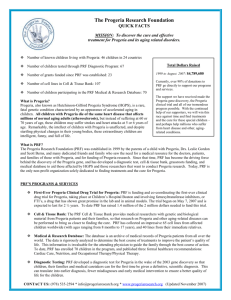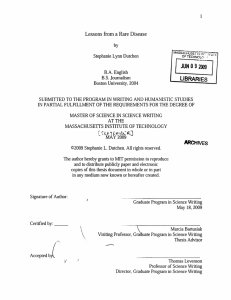Progeria - Longwood Blogs
advertisement
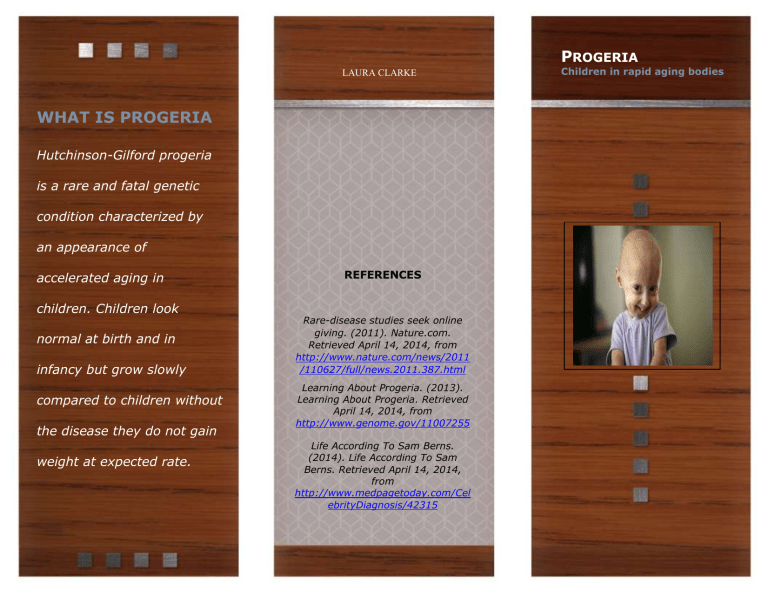
PROGERIA LAURA CLARKE WHAT IS PROGERIA Hutchinson-Gilford progeria is a rare and fatal genetic condition characterized by an appearance of accelerated aging in children. Children look normal at birth and in infancy but grow slowly compared to children without the disease they do not gain weight at expected rate. REFERENCES Rare-disease studies seek online giving. (2011). Nature.com. Retrieved April 14, 2014, from http://www.nature.com/news/2011 /110627/full/news.2011.387.html Learning About Progeria. (2013). Learning About Progeria. Retrieved April 14, 2014, from http://www.genome.gov/11007255 Life According To Sam Berns. (2014). Life According To Sam Berns. Retrieved April 14, 2014, from http://www.medpagetoday.com/Cel ebrityDiagnosis/42315 Children in rapid aging bodies PROGERIA Affects 1 in 4-8 million newborns. Only about 200-250 children living with Progeria And only expected to live until age 13 What Causes Progeria ANY TREATMENTS? Progeria is caused by a mutation A new clinical trial is happening in the gene called LMNA. LMNA for progeria. There are two drugs gene produces the Lamin A that target different pathways to protein. This protein is what the production of the Lamin A holds the nucleus of a cell protein. “Pravastatin, a member of together. This leads to the cell the drug class of statins, used for nucleus being unstable which lowering cholesterol and preventing leads to premature aging. SYMPTOMS OF PROGREIA cardiovascular disease. Zoledronic acid is a bisphosphonate, usually used as a bone drug for improving osteoporosis, and to prevent skeletal Growth failure during the first year of life Narrow, shrunken or wrinkled face Baldness Loss of eyebrows and eyelashes Short stature Large head for size of face Open soft spot Small jaw Dry, scaly, thin skin Limited range of motion fractures in people suffering from some forms of cancer” “Megan and Meghan were the first two children to enroll in the drug trial”

